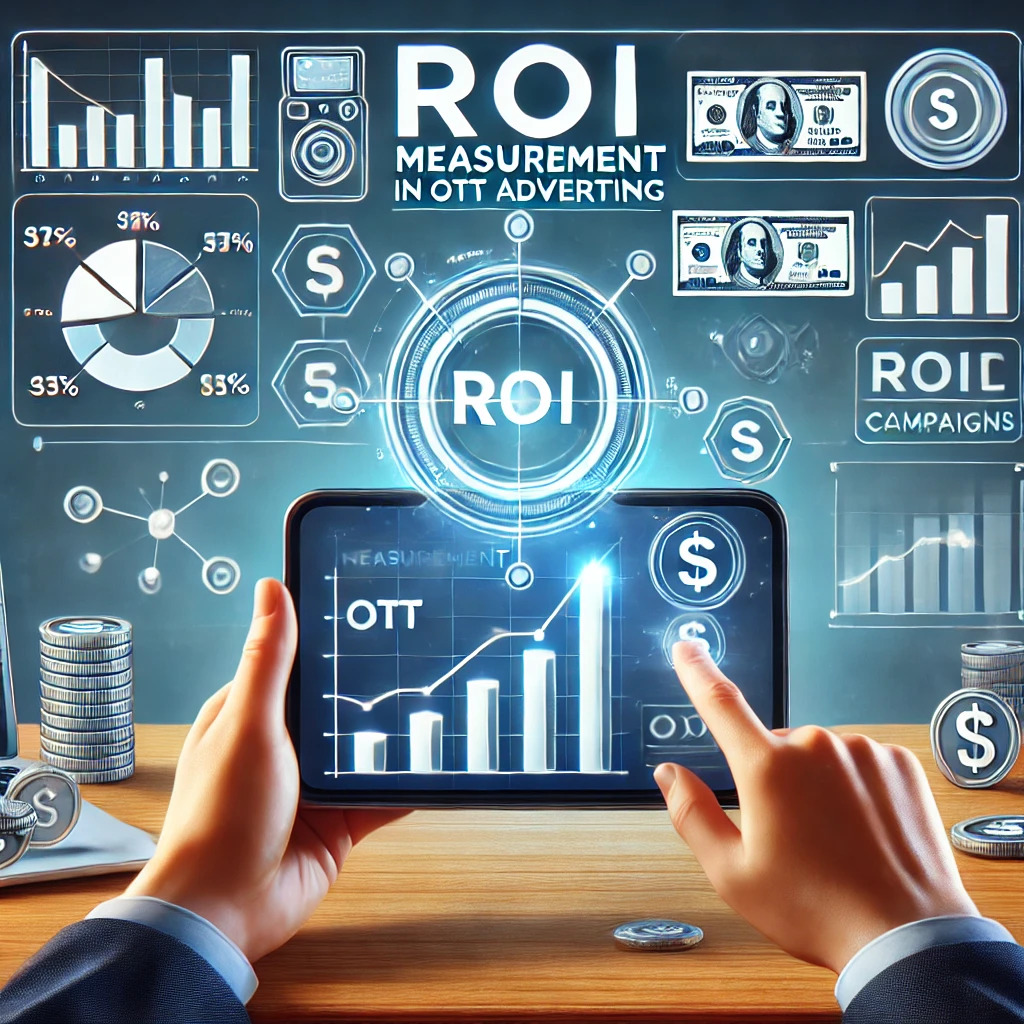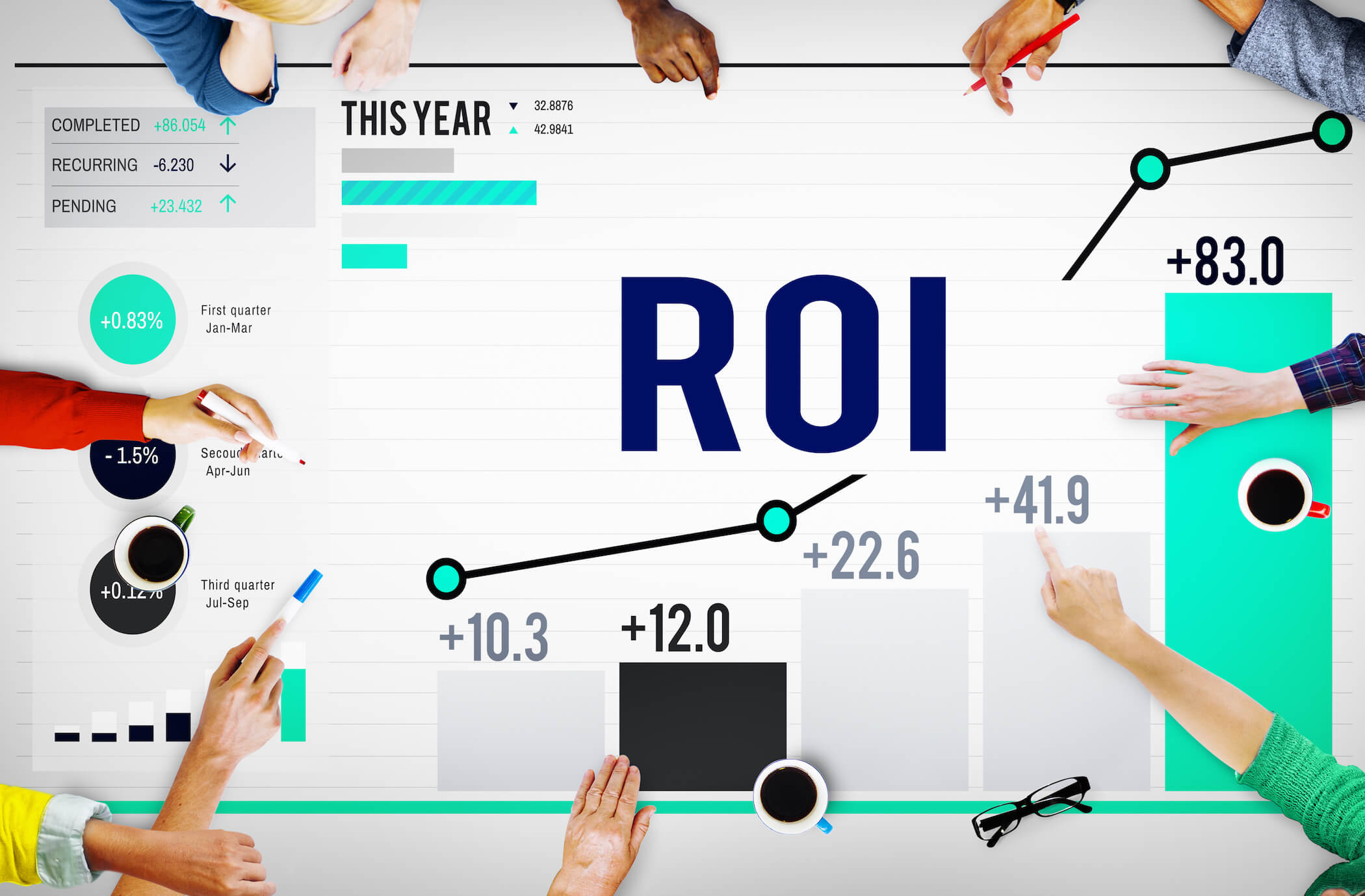
Mastering Marketing ROI: Your Beginner’s Guide to Measuring Campaign Success
Are you pouring money into marketing campaigns without truly knowing if they’re actually working? Do you wonder if your social media ads are generating sales, or if your content marketing efforts are leading to new customers? You’re not alone! Many businesses, especially beginners, find the idea of measuring the Return on Investment (ROI) of their marketing efforts daunting.
But here’s the good news: understanding and calculating your marketing ROI isn’t rocket science. It’s a fundamental skill that transforms your marketing from a hopeful expense into a strategic investment. This comprehensive guide will break down everything you need to know about measuring the ROI of your marketing campaigns in a way that’s easy to understand, even if you’re completely new to the concept.
Let’s turn your marketing spend into a profit-generating machine!
What Exactly is Marketing ROI? (The Core Concept)
At its heart, Marketing ROI (Return on Investment) is a metric that tells you how much profit you’ve made for every dollar you’ve spent on a marketing campaign. It’s the ultimate answer to the question: "Was this marketing effort worth it?"
Think of it like this: If you invest $100 in a stock, and it grows to $120, your ROI is $20 (or 20%). Marketing ROI works the same way. You’re investing in advertising, content, or promotions, and you want to see a profitable return on that investment.
The basic formula for ROI is simple:
ROI = (Net Profit from Marketing Campaign – Marketing Campaign Cost) / Marketing Campaign Cost x 100%
Let’s break down those terms for marketing:
- Net Profit from Marketing Campaign: This isn’t just the total revenue. It’s the revenue directly generated by the campaign minus the cost of goods sold (COGS) for those sales. For example, if a campaign sold 100 units at $50 each, but each unit cost $20 to produce, your revenue is $5,000, but your profit before marketing costs is $3,000 (100 * ($50 – $20)).
- Marketing Campaign Cost: This includes all expenses related to the campaign. This could be ad spend, software subscriptions, salaries of marketing staff involved, agency fees, content creation costs, etc.
Example:
Let’s say your "Summer Sale" email marketing campaign:
- Generated $5,000 in revenue.
- The products sold cost $2,000 to produce (COGS).
- The cost of sending the emails (email platform, ad design) was $500.
Net Profit from Campaign: $5,000 (Revenue) – $2,000 (COGS) = $3,000
Marketing Campaign Cost: $500
ROI = ($3,000 – $500) / $500 x 100%
ROI = $2,500 / $500 x 100%
ROI = 5 x 100% = 500%
A 500% ROI means for every $1 you spent, you got $5 back in profit. That’s a fantastic return!
Why is Measuring Marketing ROI So Crucial?
You might be thinking, "That formula looks easy enough, but why should I bother with all this tracking?" The answer is simple: measuring ROI is the backbone of smart, effective marketing. Here’s why it’s non-negotiable:
- Justify Your Spending: When you can show a clear ROI, you can confidently tell your boss, investors, or even yourself, "This marketing budget is actually making us money!" It turns marketing from a cost center into a profit center.
- Optimize Your Budget: Imagine you’re running Facebook Ads, Google Ads, and an influencer campaign. By measuring ROI, you’ll quickly see which one is bringing in the most profit. This allows you to shift your budget from underperforming channels to those that are truly driving results, maximizing your impact.
- Identify What Works (and What Doesn’t): ROI acts like a report card for your campaigns. A high ROI tells you to do more of that. A low or negative ROI signals that something isn’t working and needs to be fixed or stopped.
- Improve Future Campaigns: Every campaign provides valuable data. By analyzing your ROI, you learn what headlines convert, what audiences respond best, what offers are most appealing, and what channels are most effective. This knowledge helps you design even better campaigns in the future.
- Prove Your Value: For marketing professionals, being able to demonstrate concrete returns on marketing investment is essential for career growth and proving the value of your department. For business owners, it’s about seeing tangible growth from your efforts.
- Make Data-Driven Decisions: Guesswork is expensive. Measuring ROI replaces assumptions with hard data, enabling you to make informed decisions that directly impact your bottom line.
Key Metrics to Track Beyond Just ROI
While ROI is the ultimate goal, it’s a lagging indicator (meaning you only calculate it after the campaign). To understand why you got the ROI you did, you need to track other Key Performance Indicators (KPIs) along the way. These metrics help you understand the journey a customer takes and where your marketing is performing well or falling short.
Here are some essential metrics, broken down by what they measure:
1. Awareness & Reach Metrics:
These tell you how many people are seeing your marketing messages.
- Impressions: The total number of times your ad or content was displayed.
- Reach: The total number of unique people who saw your ad or content.
- Website Traffic: The number of visitors to your website, often broken down by source (e.g., organic search, social media, paid ads).
2. Engagement Metrics:
These show how people are interacting with your content or ads.
- Click-Through Rate (CTR): The percentage of people who saw your ad/link and clicked on it. (Clicks / Impressions x 100%).
- Time on Page/Site: How long visitors spend on your website. Longer times often indicate more engaged users.
- Social Media Engagement: Likes, shares, comments, saves on platforms like Facebook, Instagram, LinkedIn.
- Email Open Rate & Click Rate: For email campaigns, these show how many people opened your email and how many clicked on links within it.
3. Conversion Metrics:
These are the actions you want people to take that lead to business results.
- Leads Generated: The number of potential customers who showed interest (e.g., filled out a form, downloaded an ebook, signed up for a newsletter).
- Conversion Rate: The percentage of visitors or leads who completed a desired action (e.g., made a purchase, signed up for a trial). (Conversions / Total Visitors or Leads x 100%).
- Sales/Revenue: The actual number of sales or total money generated directly from the campaign.
4. Cost-Related Metrics:
These help you understand the efficiency of your spending.
- Cost Per Click (CPC): The average cost you pay each time someone clicks on your ad. (Total Ad Spend / Total Clicks).
- Cost Per Lead (CPL): The average cost to acquire one lead. (Total Marketing Cost / Total Leads).
- Cost Per Acquisition (CPA): The average cost to acquire one customer/sale. (Total Marketing Cost / Total Sales).
5. Customer Value Metrics:
These look at the long-term profitability of your customers.
- Customer Lifetime Value (CLTV or LTV): The estimated total revenue a customer is expected to generate for your business over their relationship with you. This is crucial for understanding the true value of acquiring a new customer.
- Customer Acquisition Cost (CAC): The total cost of sales and marketing efforts required to acquire a new customer. (Total Marketing & Sales Costs / Number of New Customers).
- Why CAC & CLTV are vital: If your CLTV is consistently higher than your CAC, your marketing is profitable in the long run, even if a single campaign’s immediate ROI seems low.
The Step-by-Step Process for Measuring Marketing ROI
Now that you understand the "what" and "why," let’s dive into the "how." Follow these steps for effective ROI measurement:
Step 1: Define Clear Goals and KPIs (Before You Start!)
This is perhaps the most critical step. You can’t measure success if you don’t know what success looks like!
- Set SMART Goals: Your goals should be:
- Specific: "Increase website sales by 20%." (Not "get more sales").
- Measurable: "20% increase."
- Achievable: Is it realistic?
- Relevant: Does it align with your business objectives?
- Time-bound: "Within the next quarter."
- Identify Key Metrics (KPIs): Based on your goals, choose the specific metrics you will track.
- Example Goal: "Generate 50 new leads for our software trial within 30 days."
- Relevant KPIs: Leads generated, Cost Per Lead (CPL), Conversion Rate (from website visitor to lead).
Step 2: Track All Your Marketing Campaign Costs
Be meticulous here. Don’t just include ad spend.
- Direct Costs:
- Ad spend (Google Ads, Facebook Ads, etc.)
- Software subscriptions (email marketing platforms, CRM, analytics tools)
- Agency fees or freelancer costs
- Content creation costs (writing, design, video production)
- Tools used specifically for the campaign (e.g., landing page builders)
- Indirect Costs (Optional for beginners, but good to consider later):
- Portion of staff salaries dedicated to the campaign
- Overhead costs related to marketing
Tip: Create a simple spreadsheet or use an accounting software to log every single expense tied to each campaign.
Step 3: Track the Revenue or Profit Generated
This is where you link your marketing efforts to your financial outcomes.
- Sales Tracking: Ensure your e-commerce platform, CRM, or sales system can attribute sales back to the marketing source.
- Lead-to-Sale Conversion: If your marketing generates leads (not direct sales), track how many of those leads convert into paying customers and what their average order value is.
- Consider Customer Lifetime Value (CLTV): For long-term ROI, estimate the future revenue a customer acquired through this campaign will bring. This is especially important for subscription businesses.
Step 4: Attribute Conversions Correctly (The Attribution Challenge)
This is often the trickiest part. How do you know which marketing touchpoint gets credit for a sale or conversion? A customer might see a Facebook ad, then click a Google search ad, and finally convert after reading a blog post.
- Last-Click Attribution (Simplest for beginners): This model gives 100% of the credit for a conversion to the very last marketing touchpoint the customer interacted with before converting. It’s easy to track but doesn’t tell the whole story.
- First-Click Attribution: Gives 100% credit to the first touchpoint. Good for understanding initial awareness.
- Multi-Touch Attribution (More advanced): These models distribute credit across multiple touchpoints in the customer journey. Examples include:
- Linear: Each touchpoint gets equal credit.
- Time Decay: Touchpoints closer to the conversion get more credit.
- U-Shaped/Position-Based: First and last touchpoints get more credit, with the middle ones sharing the rest.
Recommendation for Beginners: Start with Last-Click Attribution. Most basic analytics platforms (like Google Analytics) use this by default, making it easier to implement. As you get more comfortable, explore more sophisticated attribution models.
Step 5: Calculate Your Marketing ROI
Once you have your Net Profit and Marketing Costs, plug them into the formula:
ROI = (Net Profit from Marketing Campaign – Marketing Campaign Cost) / Marketing Campaign Cost x 100%
Perform this calculation for each individual campaign and, if possible, for your overall marketing efforts.
Step 6: Analyze, Learn, and Optimize
Calculating the number is just the beginning. The real value comes from what you do with it.
- Compare Campaigns: Which campaigns had the highest ROI? Why?
- Identify Trends: Are certain channels consistently outperforming others?
- Look Beyond the Number: A low ROI might not mean failure. Did the campaign achieve other goals (e.g., brand awareness) that are harder to quantify immediately?
- Make Adjustments:
- Increase budget for high-ROI campaigns.
- Pause or redesign low-ROI campaigns.
- Test new targeting, ad copy, or offers.
- Improve your landing pages or sales process if you have high clicks but low conversions.
Challenges in Measuring Marketing ROI (And How to Address Them)
While essential, measuring ROI isn’t without its hurdles. Being aware of them helps you prepare:
- Long Sales Cycles: If your product or service has a long sales cycle (e.g., B2B software), it can take months for a lead to convert into a customer. This makes immediate ROI calculation difficult.
- Solution: Focus on interim KPIs (leads generated, qualified leads) and track CLTV.
- Brand Building vs. Direct Response: Some marketing (like PR, content marketing, or social media engagement) is designed for brand awareness and long-term relationships, not immediate sales. Its ROI is harder to quantify directly.
- Solution: Track soft metrics (website traffic, brand mentions, social sentiment) and use surveys to gauge brand recall. Understand that not all marketing has a direct, immediate financial ROI.
- Attribution Complexity: As discussed, giving credit to the right touchpoint can be challenging, especially with multiple channels.
- Solution: Start simple with last-click, then explore multi-touch models as your data infrastructure matures.
- Data Silos: Marketing data might be in one system, sales data in another, and financial data in a third.
- Solution: Integrate your systems where possible (CRM with marketing automation). If not, regularly export data and combine it in a spreadsheet for analysis.
- Inaccurate Data: If your tracking is set up incorrectly, or data isn’t clean, your ROI calculations will be flawed.
- Solution: Regularly audit your tracking setup (e.g., Google Analytics, Facebook Pixel), ensure consistent naming conventions, and train your team on data entry.
Tools to Help You Measure Marketing ROI
You don’t need a massive budget to start measuring ROI. Many tools are free or affordable:
- Google Analytics (Free): Essential for website traffic, user behavior, conversion tracking, and identifying traffic sources. Set up goals and e-commerce tracking.
- Google Search Console (Free): Helps you understand how your website performs in Google search results.
- Advertising Platform Dashboards (e.g., Google Ads, Facebook Ads Manager): Provide detailed data on ad spend, impressions, clicks, conversions, and cost per conversion directly within the platform.
- CRM (Customer Relationship Management) Systems (e.g., HubSpot, Salesforce, Zoho CRM): Critical for tracking leads, customer interactions, sales pipelines, and attributing sales back to marketing sources. Many offer marketing automation features.
- Email Marketing Platforms (e.g., Mailchimp, Constant Contact, ConvertKit): Provide open rates, click-through rates, and track conversions from email campaigns.
- Spreadsheets (Google Sheets, Microsoft Excel): Don’t underestimate the power of a well-organized spreadsheet for combining data from different sources and performing your ROI calculations.
- Marketing Automation Platforms: Often combine CRM, email marketing, landing page builders, and analytics into one system, making attribution easier.
Best Practices for Maximizing Your Marketing ROI
Measuring ROI is just the first step. To truly succeed, incorporate these best practices:
- Start Small, Iterate Often: Don’t try to measure every single thing at once. Pick one campaign or channel, track its ROI, learn, and then expand. Marketing is about continuous testing and improvement.
- Focus on Customer Lifetime Value (CLTV): Shift your mindset from just immediate sales to the long-term value of a customer. A campaign might have a slightly lower immediate ROI but bring in high-value, loyal customers.
- Integrate Your Data: The more your marketing, sales, and financial data systems can "talk" to each other, the easier and more accurate your ROI measurement will be.
- Regularly Review and Report: Don’t calculate ROI once and forget about it. Set a schedule (monthly, quarterly) to review your numbers, report on findings, and adjust your strategy.
- Understand Your Audience Deeply: The better you understand your target customers, their needs, and where they spend their time, the more effective and higher-ROI your marketing will be.
- Test Everything: A/B test your ad copy, landing pages, email subject lines, and calls to action. Small improvements in conversion rates can significantly impact your ROI.
- Don’t Be Afraid of a Negative ROI (Initially): Sometimes, building a new brand or entering a new market might initially show a negative ROI. This can be acceptable if it’s part of a larger long-term strategy to gain market share or build brand equity. However, continuously negative ROI without a clear strategy is a problem.
Conclusion: Empower Your Marketing with Data
Measuring the ROI of your marketing campaigns might seem like a complex task at first, but it’s an incredibly empowering one. By systematically tracking your costs, attributing your results, and calculating your return, you transform your marketing from guesswork into a precise, data-driven engine for growth.
Embrace the numbers, learn from your successes and failures, and continuously optimize your efforts. When you understand your marketing ROI, you’re not just spending money; you’re making smart, profitable investments that will propel your business forward. Start today – your bottom line will thank you!



Post Comment